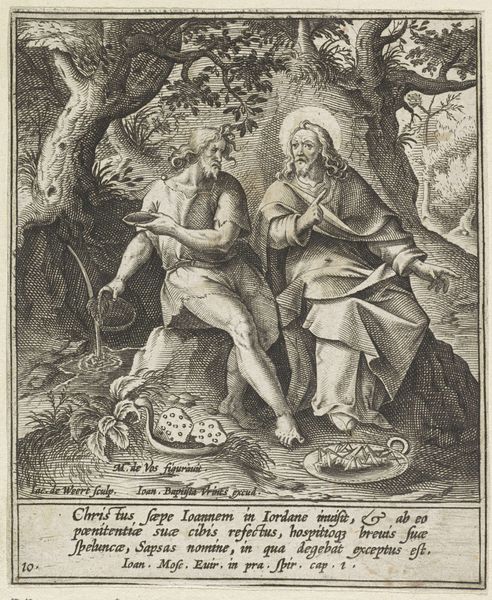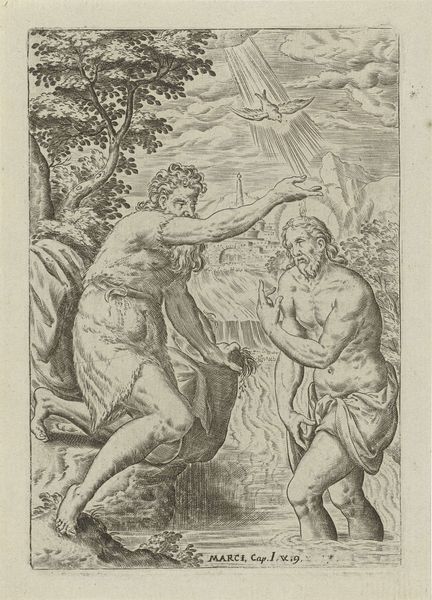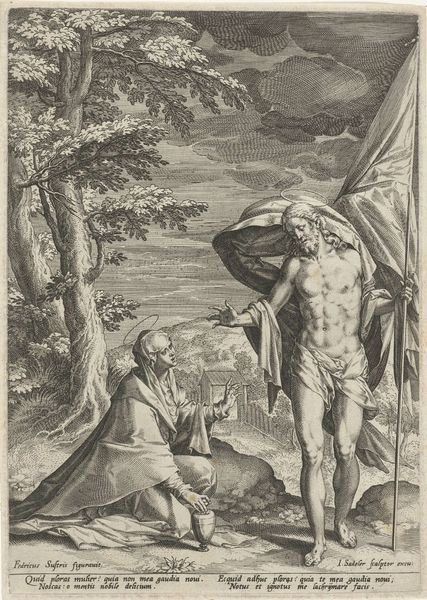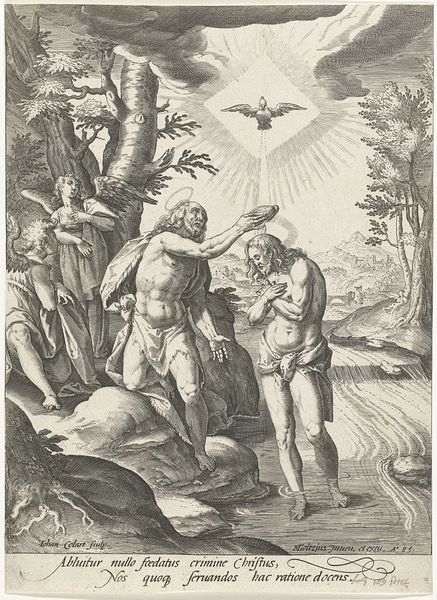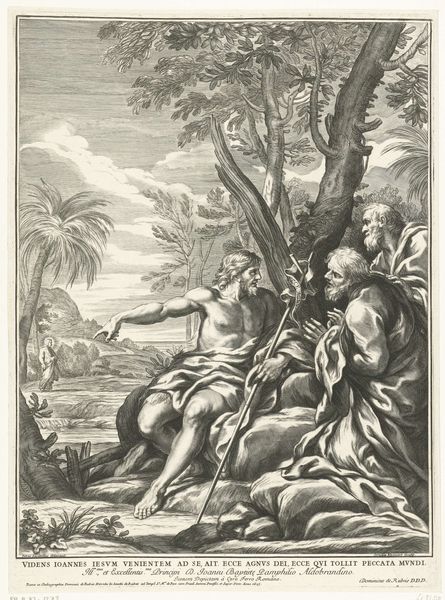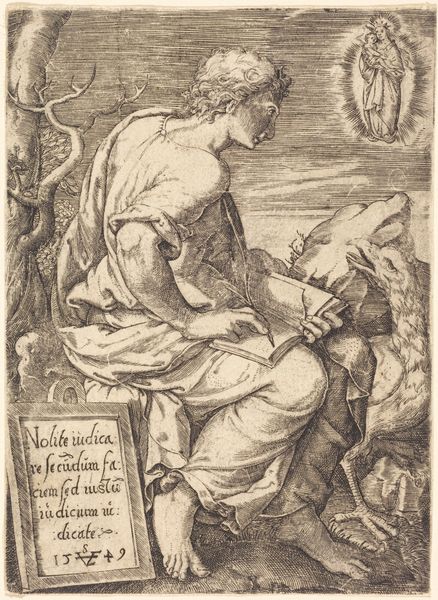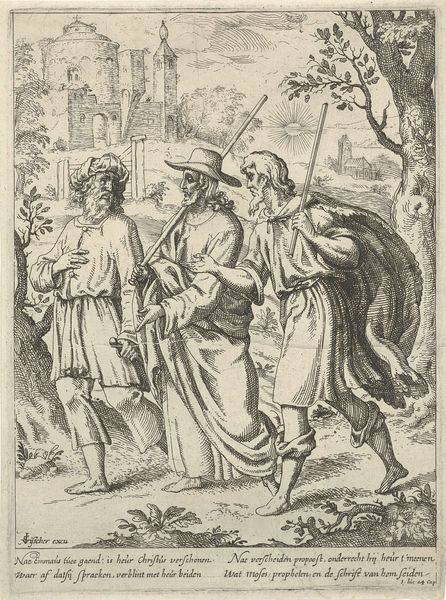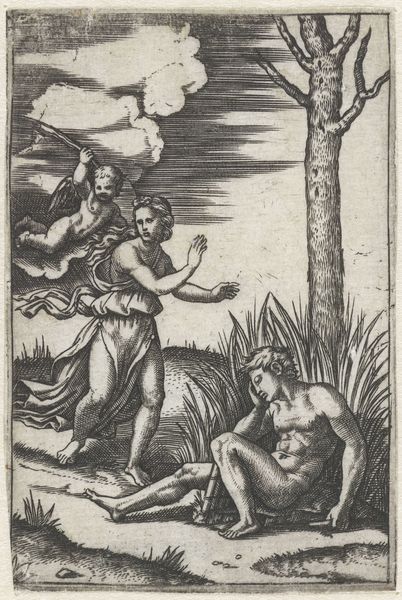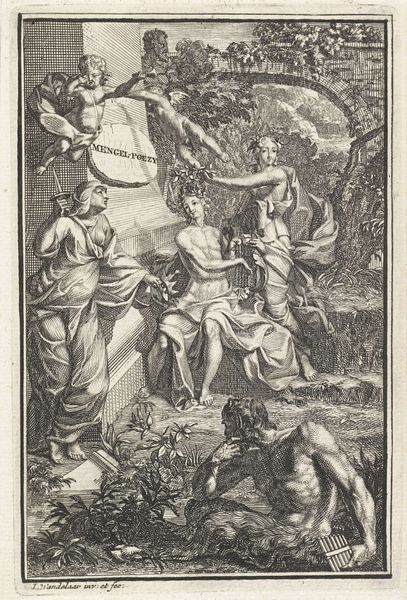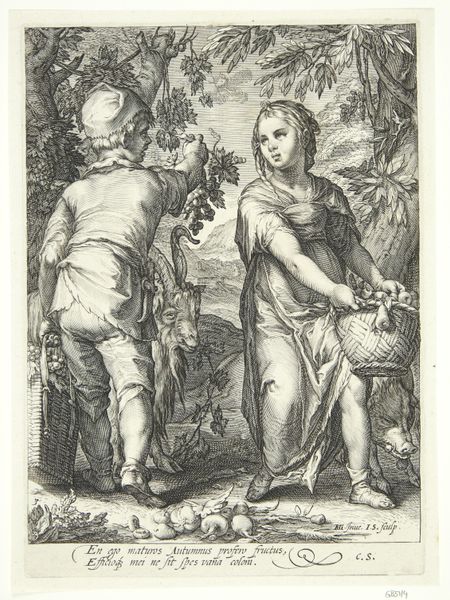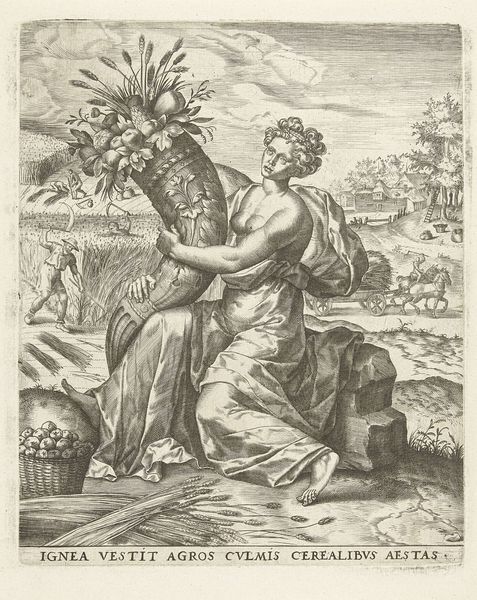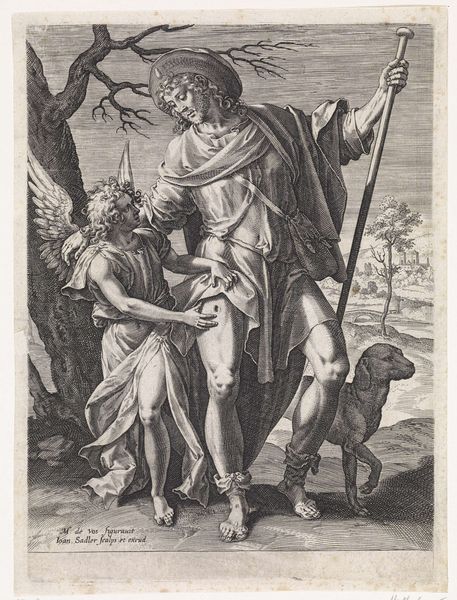
print, engraving
#
baroque
# print
#
old engraving style
#
figuration
#
line
#
history-painting
#
engraving
Dimensions: height 111 mm, width 95 mm
Copyright: Rijks Museum: Open Domain
Editor: This is "Baptism of Christ in the Jordan", a print made between 1580 and 1600 by Jacob de Weert. The figures have a solemn and graceful presence, all rendered with very precise lines. What visual symbols stand out to you? Curator: Immediately, the dove descending signifies the Holy Spirit. It’s not merely representational; it's a powerful, loaded image of divine approval and presence, common in art to cement faith’s ideas. Do you notice how the artist contrasts the robust figure of John the Baptist with the vulnerable Christ? Editor: Yes! John looks strong and active, while Christ seems almost passive. What does this contrast suggest? Curator: Consider how the staff John holds acts as a signifier of authority, a symbolic claim. But look at Christ’s crossed arms, suggestive of both acceptance and vulnerability. How might that image, that visual arrangement, influence a viewer's understanding of power, sacrifice, or the nature of holiness itself? Editor: So, these contrasting symbols invite a deeper reflection on faith? Curator: Precisely. And what about the river Jordan? Is it simply a backdrop or something more? Water itself is purification, a cultural and personal act. Think about baptism throughout history; the visual elements coalesce to convey redemption through a transformative act. Editor: I never thought of it that way before, how the very elements play into a larger theological message. Thanks! Curator: Indeed. Recognizing visual symbolism helps us better understand what images and art mean for all of us.
Comments
No comments
Be the first to comment and join the conversation on the ultimate creative platform.
